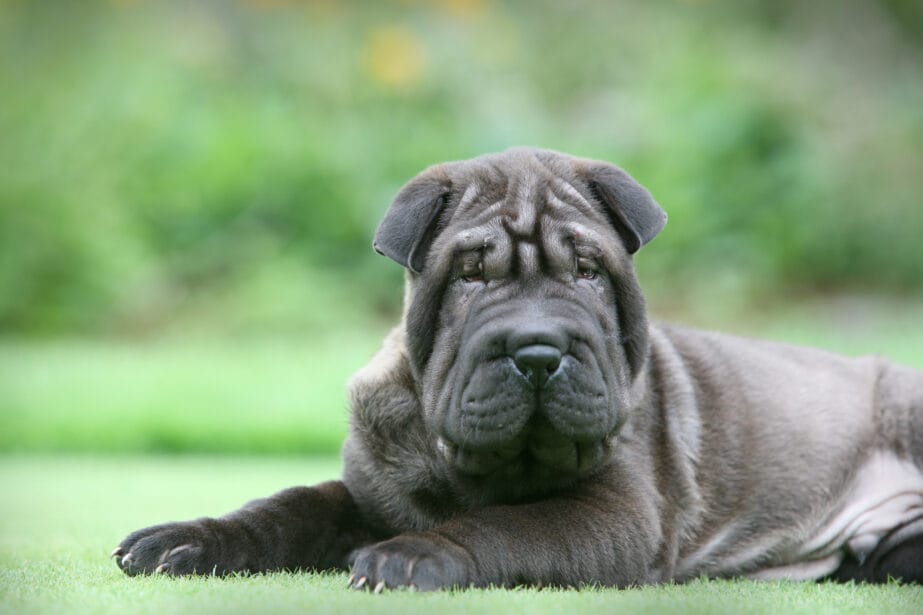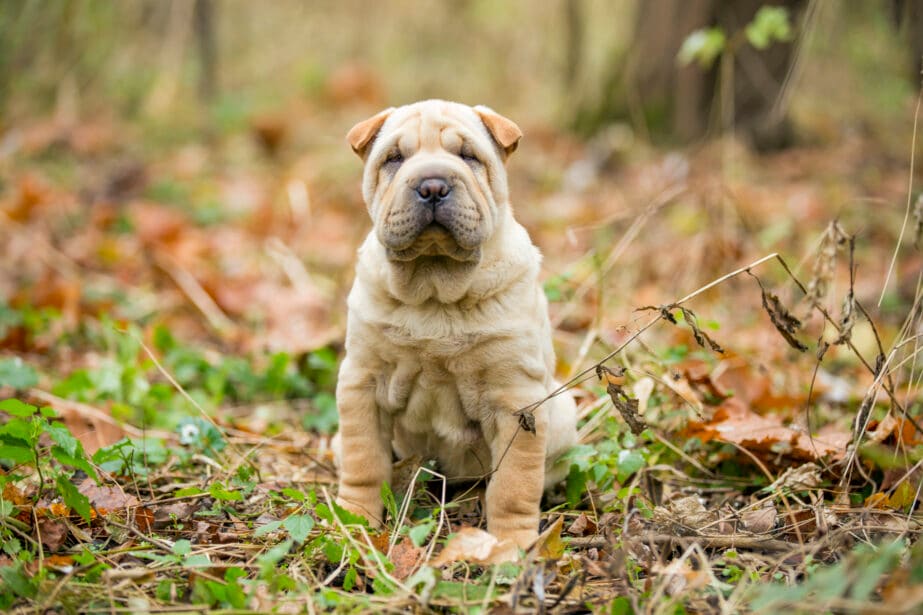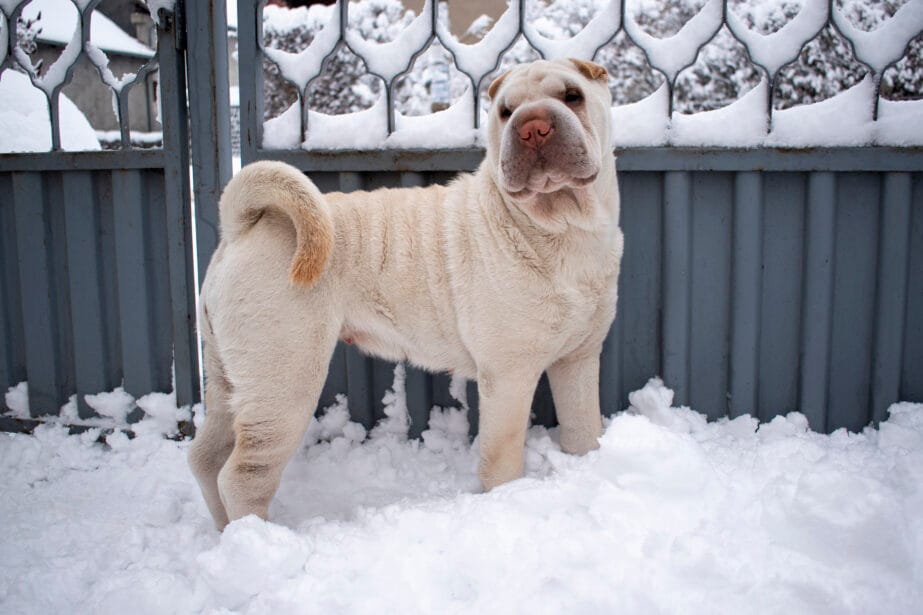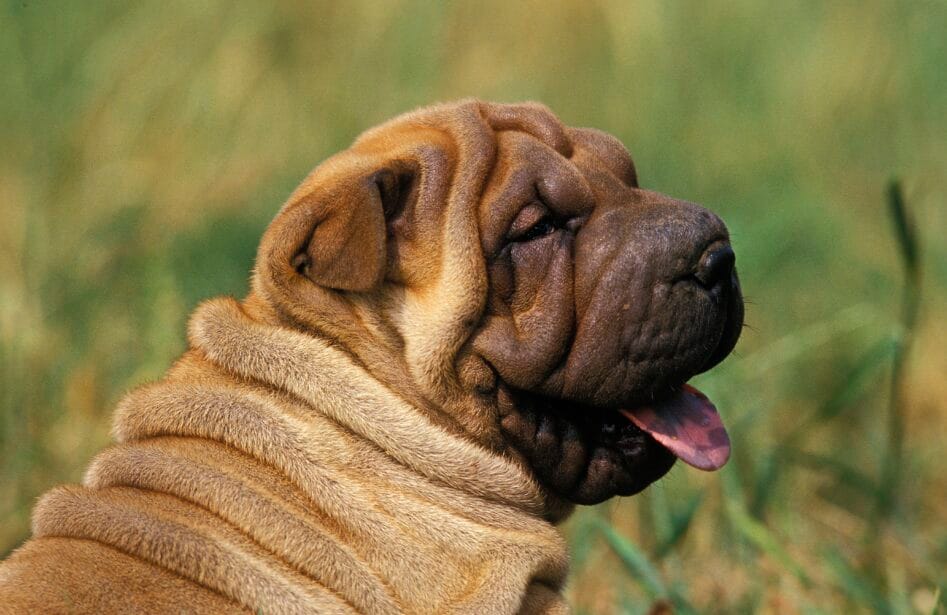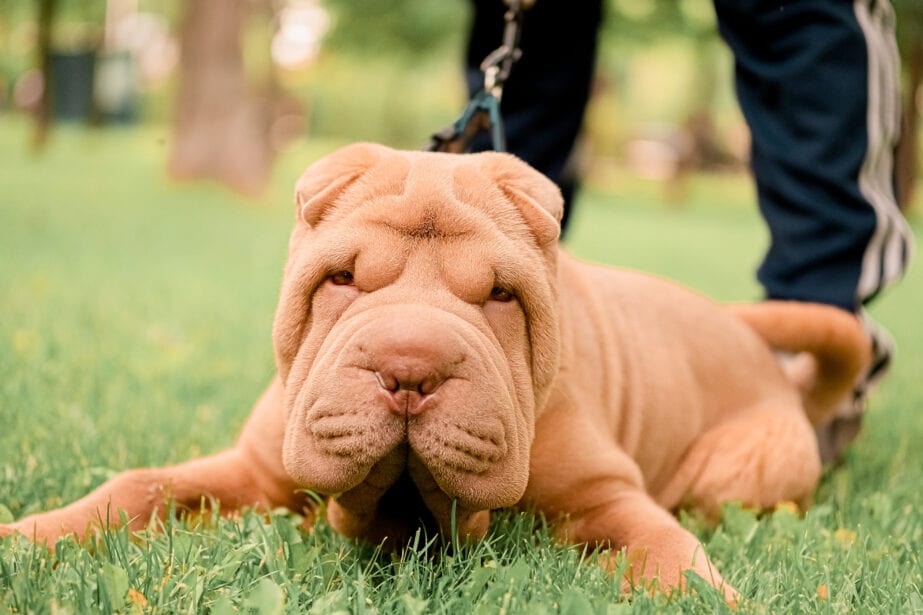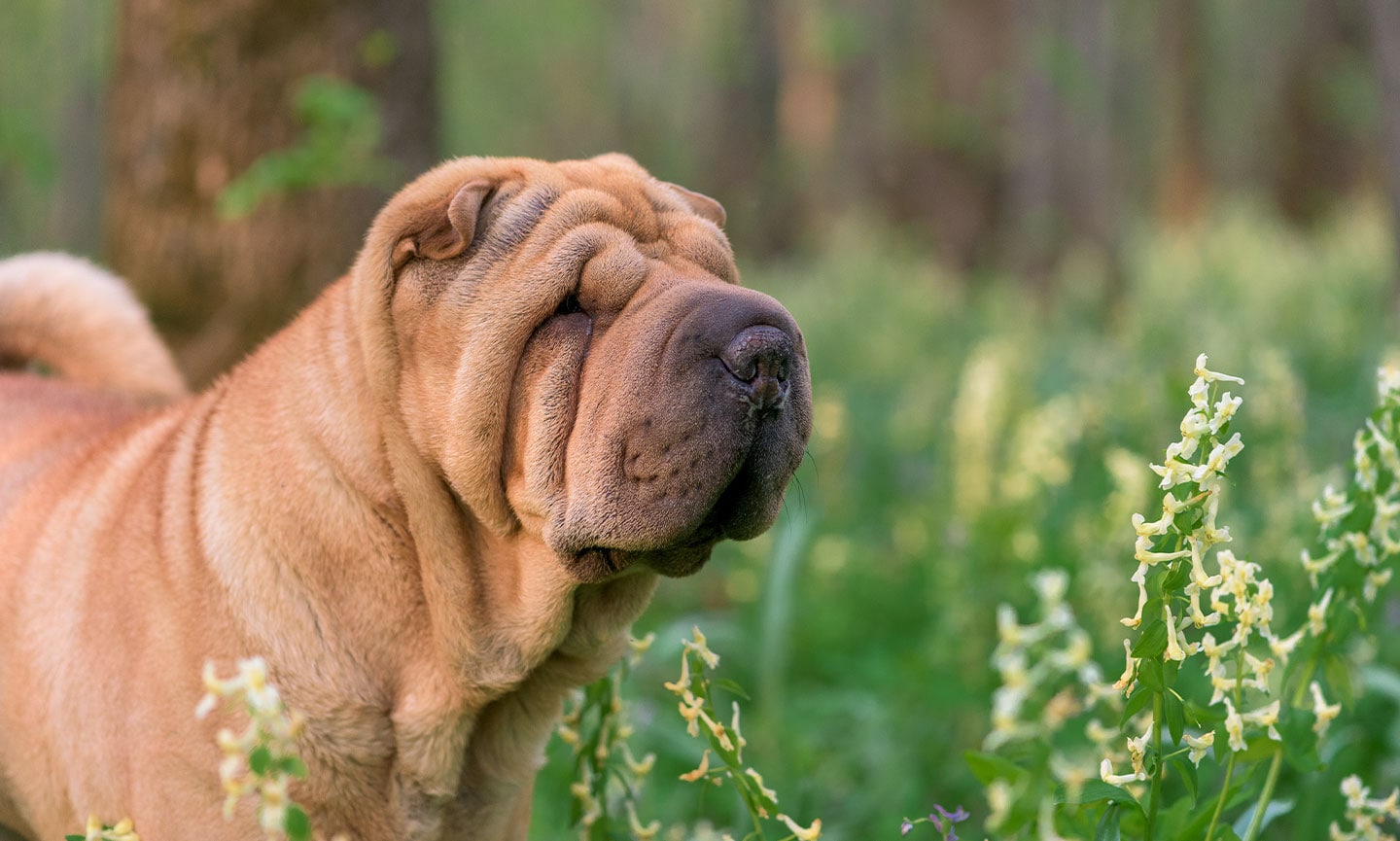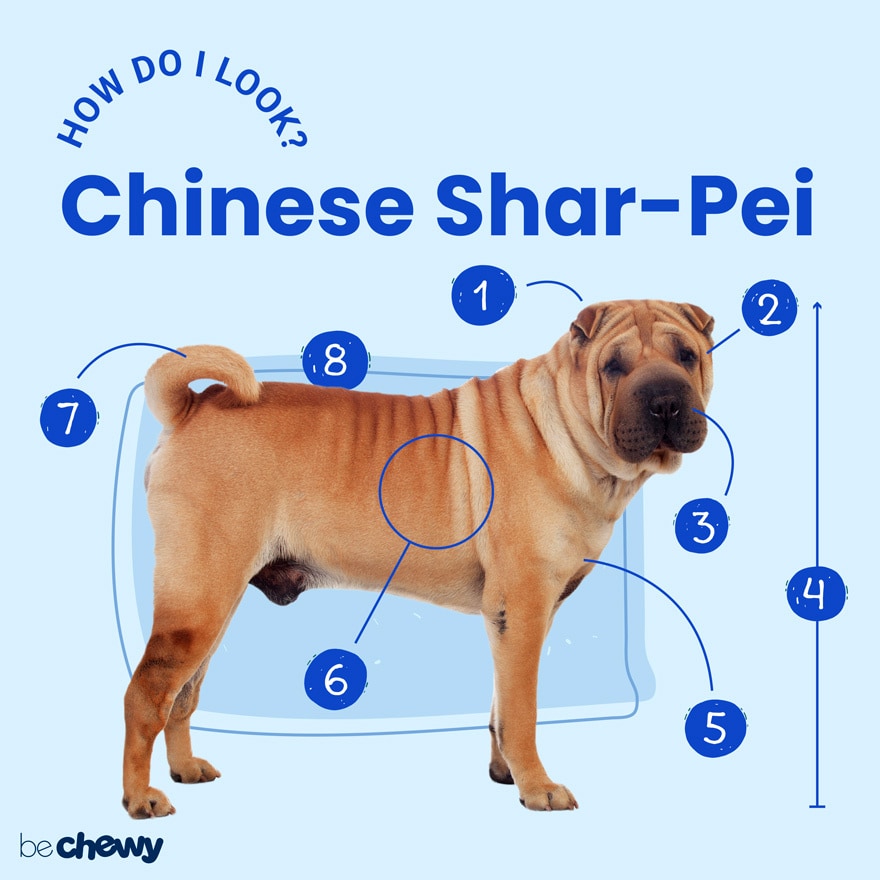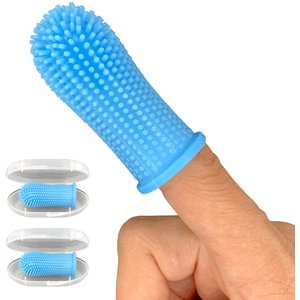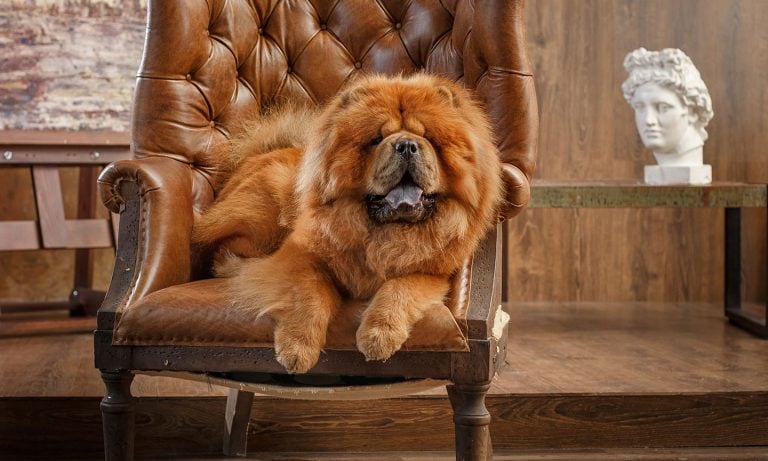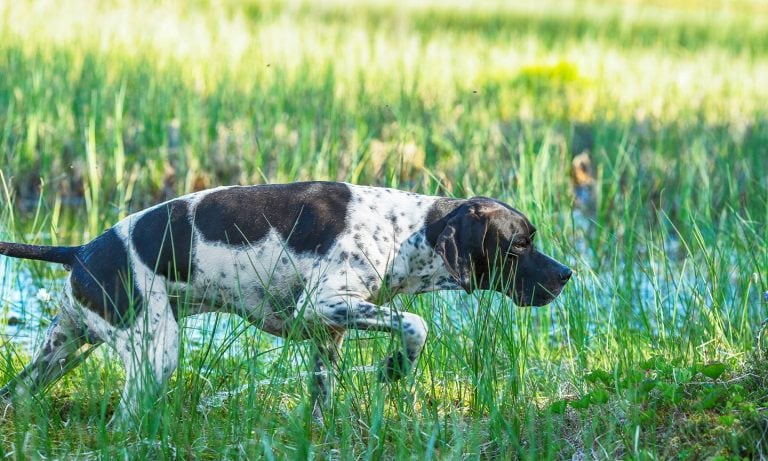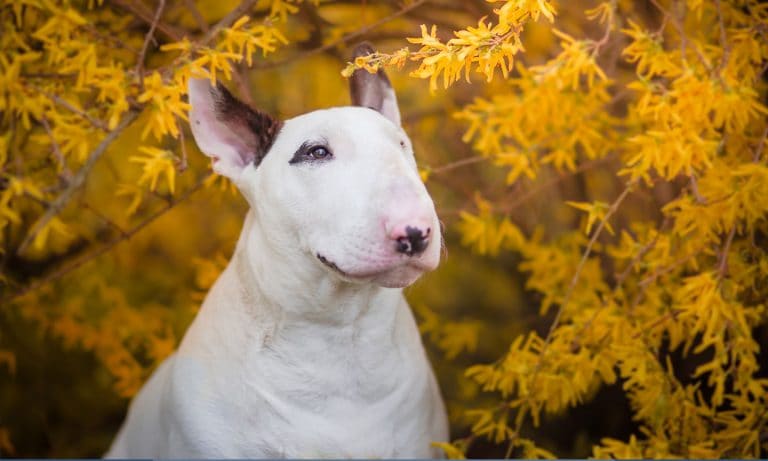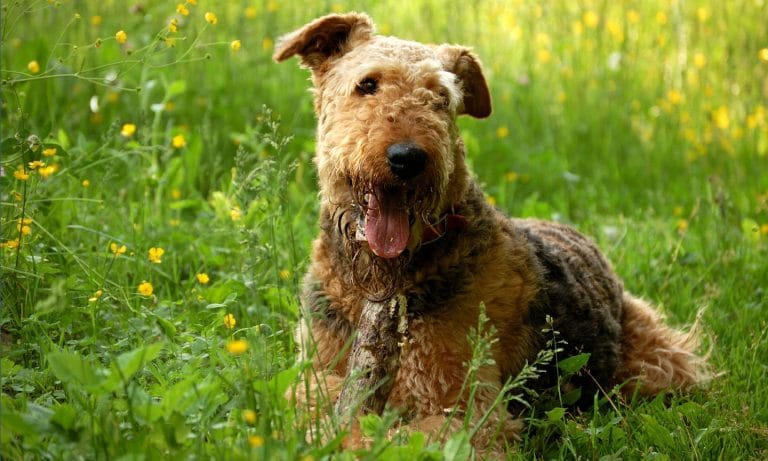You are not a wallflower. You don’t even own a black T-shirt, and the thought of being lost in a crowd gives you the heebie jeebies. The Chinese Shar-Pei is a dog for people like you. This pup isn’t going to be mistaken for a Lab or terrier. Oh, no—they’re quite unique-looking with all those wrinkles, so everyone is going to ask about your dog. Which is fine with you—you enjoy meeting new people. The more reserved Shar-Pei, however, tends to take longer to warm up to strangers. An ancient breed originally trained as guard dogs, this one-of-a-kind canine may not have your ability to make fast friends, but they’ll be your most loyal companion.
Breed Snapshot
Temperament:
WatchfulReservedLoyalCoat Color:
Apricot DiluteBlackBlue DiluteLilac DiluteCreamCream DiluteBrownChocolate DiluteRedFive Point Red DiluteRed FawnFawnIsabella DiluteBlack SableCream SableFawn SableRed SableBlue
Best For
The Chinese Shar Pei's unique wrinkled appearance stands out in the crowd, and their reserved and loyal nature makes them ideal for pet parents seeking a devoted and distinctive companion.
Chinese Shar-Pei Temperament
The Chinese Shar-Pei breed is loyal and committed to their family but can be wary around strangers, and they respond better to older children who understand how to play calmly with dogs. Because the Shar-Pei dog was bred for guarding livestock and hunting, they sometimes don’t enjoy sharing their home with cats or other dogs. It’s important to socialize your pup to numerous new people, situations and other animals early in life when they’re puppies to help them be used to guests as they grow up.
How to Care for a Chinese Shar-Pei
The Shar-Pei needs socialization early in life to be a well-adjusted, happy adult dog. They love their family deeply, but you’ll want to be cautious around strangers, young children or other animals. While they may be higher maintenance in their socialization needs, they’re very low maintenance when it comes to grooming. They’re also adaptable to a large or small home and have moderate exercise needs, enjoying short daily walks at a brisk speed and lots of time relaxing with you.
Chinese Shar-Pei Health
Shar-Peis have a life expectancy of 8 to 12 years. By watching out for the health issues that can affect the Shar-Pei breed, you can help your dog have a full lifespan and a happy life.
- Skin Issues: Because of the folds in their skin, Shar-Peis can develop skin infections more easily than non-wrinkly breeds. That’s why it’s so important to make sure their skin dries thoroughly after a bath or any time they’re in water. Pododermatitis refers to infections between the toes. Skin or foot infections may be treated with topical treatments, oral antibiotics or anti-fungals, depending on the cause. This breed can also develop interdigital cysts, which are painful nodules between the toes. Treatments range from topical ointments to surgery, depending on the severity.
- Shar-Pei Fever: Shar-Pei Fever is a genetic disease characterized by swollen hocks (back of legs) and fever which if left untreated can lead to liver and kidney failure. Genetic screening testing may be available so ask your breeder.
- Ear Infections: The Shar-Pei’s ears are very small, making them more prone to infections. In worst-case scenarios, they may require surgery. However, your veterinarian may recommend weekly prophylactic ear cleaning to help prevent infections from occurring.
- Hypothyroidism: As many as one in five Shar-Peis may have a thyroid deficiency. Symptoms include weight gain, hair loss and lethargy. Hypothyroidism can typically be managed through daily medication.
- Eye Issues: The Shar-Pei can develop eye problems, such as dry eye (keratoconjunctivitis), entropion, corneal ulcer, glaucoma, retinal dysplasia, and SARDS. If you suspect your pet is having trouble with their eyes (symptoms include redness, discharge, cloudiness, bulging, squinting or pain), make an appointment with your veterinarian right away.
Chinese Shar-Pei History
The Shar-Pei breed originated in China, and, as with many breeds from China, the dog’s history is mysterious. Some say the dog can be traced back to the Han Dynasty more than 2,000 years ago, pointing to figurines from around 200 B.C. that resemble the Shar-Pei. Some say the pups were the dogs of peasants and bred to be hunters or herd and guard livestock. Others say the dogs once guarded Chinese royal families. At one point, the dogs were even used in fighting pits until other dog breeds replaced them.
When the Chinese Communist Party came to power in 1949, it disapproved of families having dogs as pets and slaughtered many breeds, almost leading to the Shar-Pei’s extinction. Guinness World Records even listed them as the rarest dog breed in the world through the mid-1970s. A Shar-Pei breeder in Hong Kong, Matgo Law, was so worried about the rare dog’s future, he pled with the world to save the breed. His plea, along with an article published in “Life Magazine,” helped increase the dog’s popularity in the United States.
The Shar-Pei and the Chow Chow both have blue-black tongues, which might be due to having shared distant ancestors in China. Some Shar-Peis also have a softer, longer bear coat that isn’t considered a standard trait. Some believe this is a result of past breeding with Chow Chows. The American Kennel Club first recognized the Chinese Shar-Pei in 1992.
Are you looking to add a Shar-Pei puppy as a pet? You can find a list of reputable breeders on the American Kennel Club’s website. What’s the average Shar-Pei puppy price? Depending on the breeder, the cost can be anywhere from $1,000 to even more than $3,000. But for that price, you’re likely getting a puppy who’s been screened for health and temperament issues and may include pedigree papers. Shar-Pei rescue organizations and local shelters can also help you find Shar-Pei dogs to adopt. Search Chewy’s database of adoptable dogs in your area.
FAQs
Are Shar-Pei dogs hypoallergenic?
Shar-Peis are not hypoallergenic. In fact, they can actually trigger more allergy symptoms, compared to some other dog breeds. The name “Shar-Pei” translates to “sand skin” because of how their coat feels. Their coat is so unique that some people are allergic to them and can develop rashes. Shar-Peis also tend to produce more oil than other dogs, which can be difficult for someone allergic to dog oils or the protein in their skin cells.
How big do Shar-Peis get?
Shar-Pei dogs can get as big as 18 to 20 inches and weigh 45 to 60 pounds and are considered medium-sized dogs.
How long do Shar-Peis live?
Shar-Peis typically have a life span of eight to 12 years, which is a long time to create many happy moments with this pup.
What were Shar-Peis bred for?
Shar-Peis are believed to have been bred for hunting, herding and protecting livestock. Some people believe they even once guarded royalty! Unfortunately, they were also once used as fighting dogs, but now they are primarily companions, and they thrive with the families they love.
What are the most common Shar-Pei mixes?
The most common Shar-Pei mixes are:
- Shar-Pei-Pit Bull mix (Pit Pei)
- Shar-Pei-Labrador mix (Lab Pei or Sharpay Lab)
- Shar-Pei-German Shepherd mix (German Shar-Pei or Shepherd Pei)
- Shar-Pei-Basset Hound mix (Walrus Dog or Ba-Shar)
- Shar-Pei-Beagle mix (Sharpeagle)
- Shar-Pei-Boxer mix (Box-a-Shar or Boxpei)
Note: These are not purebred dogs but mixed breeds.
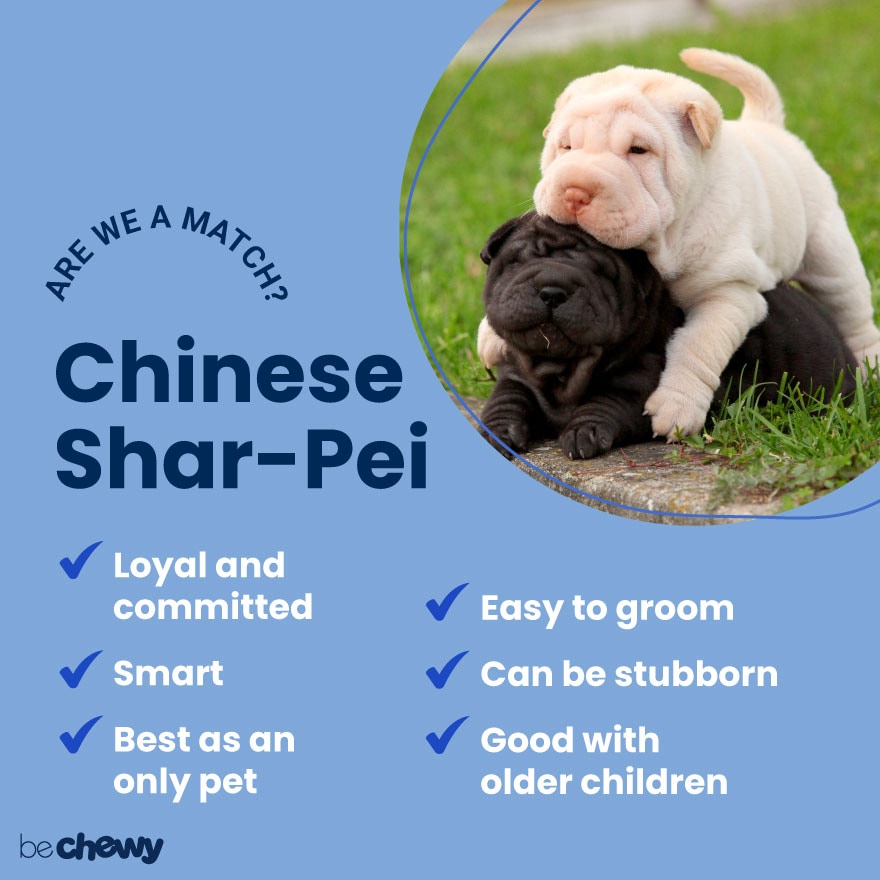
Top Takeaways
The Shar-Pei is a loyal breed who makes a good family dog; they love their family immensely. They may not be excited about strangers or hanging out with little kids, but they’ll be thrilled to have a short walk with you followed by lots of together time at home.
Expert input provided by veterinarian Jessica Fusch, DVM, of Eastlake Veterinary Services, and certified dog trainer Melissa Thomas, MPC, VSA-CDT, owner of Training to a T, LLC.
Breed characteristic ratings provided by veterinarian Dr. Sarah J. Wooten, DVM, CVJ, a veterinarian at Sheep Draw Veterinary Hospital in Greeley, Colorado; dog trainer and behavior consultant Irith Bloom, CPDT-KSA, CBCC-KA, CDBC, owner of The Sophisticated Dog, LLC, in Los Angeles; and certified animal behavior consultant Amy Shojai, CABC, in Sherman, Texas.
The health content was medically reviewed by Chewy vets.

Search for Adoptable Chinese Shar-Peis Near You
Top Chinese Shar-Pei Names
These are the top Chinese Shar-Pei names as chosen by Chewy's pet parents!
Female Names
- Luna
- Nala
- Bella
- Lucy
- Stella
- Molly
- Chloe
- Coco
- Willow
- Lola
Male Names
- Bear
- Bruno
- Leo
- Zeus
- Milo
- Blu
- Winston
- Cooper
- Otis
- Buddy
Share:

